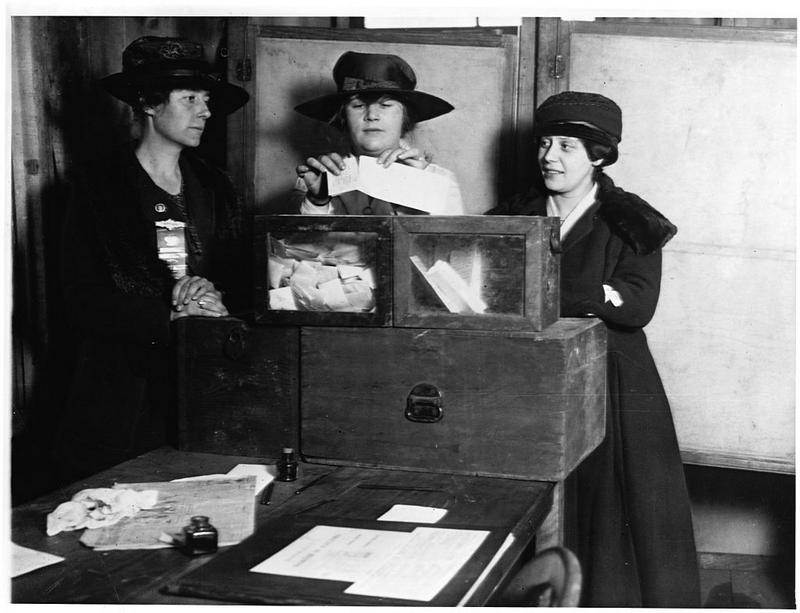The Surprisingly Ongoing Global Women's Suffrage Movement
By | September 17, 2019

The women's suffrage movement is among many things Americans tend to claim for our own, but it was (and still is) happening worldwide. Women's suffrage around the world can look very different from how it does in America---including, in some cases, a much longer timeline. Which country first granted women the right to vote? (Spoiler: It wasn't the U.S.) And where are women still not allowed to vote? Let's take look at women's suffrage from a global perspective, and from the perspective of all the suffragettes who paved the way to equal voting rights.

The 19th Amendment
On August 18, 1920, the United States Congress officially ratified the 19th Amendment to the U.S. Constitution giving American women the right to vote. This amendment only granted the right to vote to white and black American women. Four years later, in 1924, Native American women were allowed to vote for the first time with the passage of the Indian Citizenship Act.

New Zealand Pioneers
The first county to grant women's suffrage around the world was New Zealand. On September 19, 1893, the country of New Zealand became the first nation on Earth to allow women, including indigenous Maori women, to vote in national elections. How was it that New Zealand beat out the United States and European countries for this distinction?
It came about as the result of the efforts of a woman named Kate Sheppard, an English-born woman living in Christchurch, one of the biggest cities in New Zealand. As it was in the United States, the women's suffrage movement in New Zealand was closely tied to the temperance movement, and Sheppard was the leader of the country's Temperance Union.

Kate Sheppard, Advocating For Women
Kate Sheppard, who spoke on behalf of temperance and suffrage causes in New Zealand, was a key figure in the movement. She organized petitions demanding voting privileges for women and presented them before Parliament. Her efforts swayed lawmakers, but she still needed the backing of Lord Glasgow, the governor of New Zealand, who eventually signed the suffrage bill into law just six weeks before the country's next general election. With such a short-notice deadline, Sheppard got to work registering women voters. By the time Election Day rolled around on November 28, Sheppard had registered 84% of New Zealand's women.

Ten More Countries Beat the U.S.
New Zealand may have been the first country to grant women's suffrage around the world, but they weren't the only nation to beat the United States to that achievement. Ten other countries, in addition to New Zealand, gave women the right to vote before the U.S. passed the 19th Amendment: Australia, Finland, Norway, Denmark, Canada, Austria, Germany, Poland, Russia, and the Netherlands. By the end of World War II, nearly every country in Europe had passed suffrage laws. The last European hold outs were Switzerland, which granted women the right to vote in 1971; Portugal, which followed suit in 1976; and Liechtenstein in 1984. One more remains firm, however. We'll get to them momentarily. First, we must discuss ...

Suffrage in Middle Eastern and African Countries
The strict and long-standing religious and cultural beliefs of many countries in the Middle East and Africa meant that many of these places were slower to pass women's suffrage laws. In the 1960s and '70s, numerous countries---including Iran, Algeria, Zimbabwe, and Jordan---welcomed women voters. In 2005, women in Kuwait were permitted to vote, and the following year, women's suffrage came to the United Arab Emirates. Afghani women voted in record numbers for the first time in 2014.

Saudi Arabia
The second-to-last country to grant women's suffrage around the world was Saudi Arabia. In Saudi culture, women were not allowed to even leave their homes without the consent of their guardian—a male authority figure, usually a father, husband, or brother. Women's suffrage was passed in Saudi Arabia in 2015, but these customs are so deeply entrenched in the country that it may take years before the voices of women are heard and valued.

The Last Hold Out
There is still one country that does not allow women to be part of the voting process: Vatican City. Though it's wedged firmly within the boundaries of Rome, the epicenter of Catholicism is its own, independent country. Here, only ordained cardinals are allowed to vote or participate in the legislative process. The Catholic Church only allows men to be cardinals, meaning women cannot participate in elections in the Vatican. There have been calls for change, however. The modern, progressive Pope Francis has unusually liberal stances on issues such as gay marriage, so it could be possible that he will make changes to the voting system in Vatican City at some point during his papacy.

